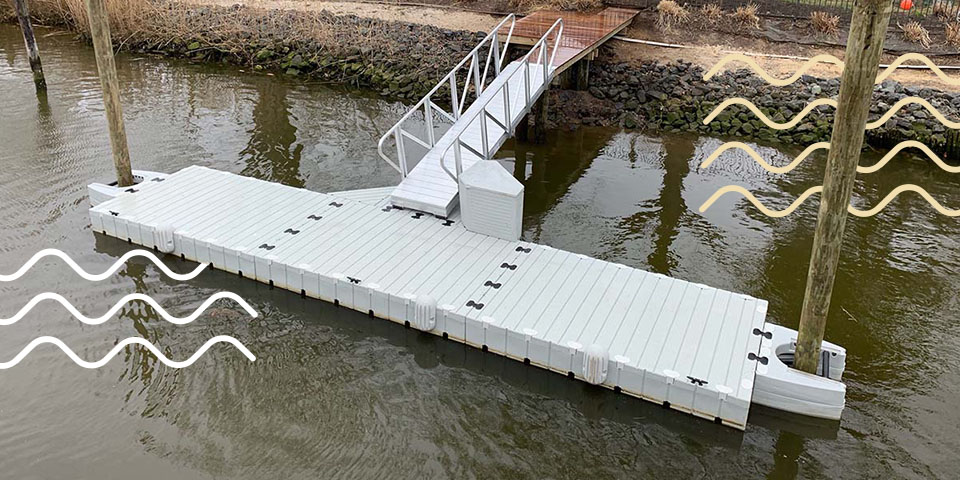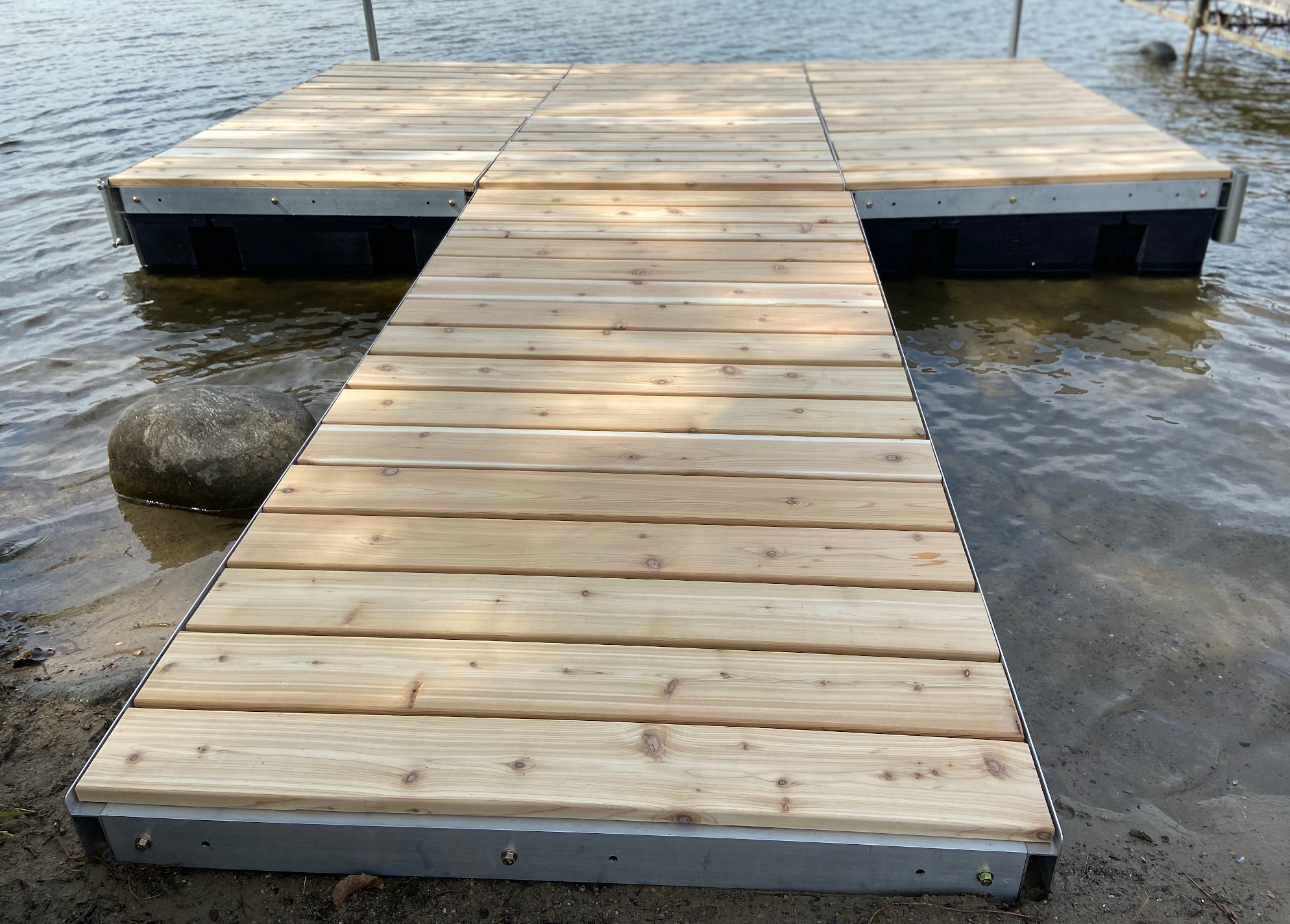Navigating the Options: Choosing the Right Dock Company for Your Floating Dock Project
Navigating the Options: Choosing the Right Dock Company for Your Floating Dock Project
Blog Article
Create the Perfect Docking Option With Floating Docks
Floating docks present a functional service for a range of maritime requirements, adapting flawlessly to varying water degrees and varied vessel types. As we explore the vital elements that add to the efficiency of floating docks, numerous essential factors relating to stability and upkeep will emerge, elevating concerns regarding how to maximize your docking experience.

Advantages of Floating Docks
Floating docks deal numerous benefits that make them an ideal choice for various maritime applications. Among the key advantages is their versatility to altering water levels. Unlike dealt with docks, floating docks fluctuate with the trend, making certain regular ease of access for vessels. This attribute is specifically vital in locations susceptible to considerable tidal fluctuations or seasonal water degree adjustments.
Additionally, floating docks are usually simpler and quicker to install contrasted to conventional set frameworks. Their modular design permits simple assembly and disassembly, promoting maintenance and moving when needed. This flexibility is specifically advantageous for temporary applications or in atmospheres where conditions might change.
Floating docks also often tend to be extra eco-friendly, as they lessen disruption to the seabed and bordering water communities. Their resilient nature decreases the threat of damage to aquatic life, advertising a healthier setting. These docks can be tailored to accommodate various vessel dimensions, making certain that they satisfy particular functional demands.
Ultimately, the combination of adaptability, convenience of setup, and environmental factors to consider makes floating docks a highly efficient remedy for a wide variety of maritime requirements.
Picking the Right Products
Selecting the appropriate materials for floating docks is critical to ensure longevity, stability, and durability. The choice of materials directly influences the dock's efficiency in numerous ecological problems, including exposure to water, sunlight, and possible wear from aquatic web traffic.
Typical products utilized for floating docks include light weight aluminum, timber, and high-density polyethylene (HDPE) Light weight aluminum is lightweight, corrosion-resistant, and needs very little maintenance, making it an outstanding selection for longevity. Its first price can be higher contrasted to various other materials.
Wood, while cosmetically enticing and supplying a typical look, can be vulnerable to rot and insect damages if not correctly dealt with. Making use of pressure-treated wood or normally resilient species like cedar or redwood can minimize these problems.
HDPE is a preferred option because of its resistance to UV rays and chemicals, along with being eco-friendly. dock company. It is offered and lightweight in different colors, enabling for customization
Inevitably, the best product choice will certainly depend upon specific demands, including budget plan, wanted appearances, and environmental factors to consider. Careful examination of these factors will certainly bring about a resistant and effective floating dock service.
Layout Factors To Consider for Stability
When creating floating docks, ensuring stability is a fundamental element that can substantially impact their capability and pop over to these guys safety and security. Security in floating dock style is influenced by numerous variables, consisting of buoyancy, weight circulation, and the setup of parts.
Weight circulation is critical; equally distributing tons across the dock stops tilting and improves stability. This can be achieved via critical their website positioning of docking tools, such as cleats and fenders, in addition to appropriate spacing of drifts. Additionally, the measurements of the dock should be attentively prepared. Broader styles can offer increased security, specifically in rough water conditions, while longer docks might need additional assistances to avoid sagging.
One more key factor to consider is the environmental influence, including wave activity and wind. Integrating attributes such as sidewalls or skirting can aid reduce the results of environmental pressures, maintaining stability in adverse problems. Ultimately, a combination of thoughtful design, product selection, and understanding of ecological factors will certainly yield a floating dock that meets both security and safety and security requirements.
Setup Tips and Strategies

Following, protect the needed licenses and follow regional policies, which may determine installment techniques and environmental considerations. Engage a certified service provider experienced in floating dock installations if required. Usage high-quality products created for aquatic atmospheres to improve resilience and longevity.
When placing the dock, align it parallel to the coastline to help with easy access. Ensure that the anchoring system is durable, using concrete blocks or helical supports to maintain the dock versus wind and wave activity. It's vital to represent seasonal water degree changes, including possible ice movement in cooler climates.
Throughout the installation, ascertain the dock's floatation and stability prior to completing the anchoring. Routinely evaluate the setup for any kind of signs of wear or damages. By following these strategies and ideas, you find can achieve a safe, functional, and visually pleasing floating dock installation that satisfies your demands.
Maintenance and Care Standards
Caring and maintaining for floating docks is important to lengthening their lifespan and guaranteeing risk-free use. Normal inspections ought to be carried out to determine any kind of indicators of wear, damage, or marine growth. Look for fractures, loose fittings, or stained locations on the dock's surface, as these problems can jeopardize architectural stability.
Cleaning up is necessary. Make use of a stress washing machine to eliminate algae, barnacles, and debris, which can collect over time. For stubborn growth, consider ecologically friendly cleaner that will not harm aquatic life.
Furthermore, inspect the mooring lines and anchors frequently to ensure they are protected and totally free from corrosion. Change any kind of torn or damaged lines promptly to maintain security.
During extreme weather, such as tornados or freezing conditions, take precautionary measures. Safeguard the dock with added mooring lines and, if practical, eliminate any detachable parts to stop damage.
Conclusion
In conclusion, the execution of floating docks offers a versatile and reliable docking remedy suitable for different maritime applications. With correct installation and routine maintenance, floating docks can offer efficient and reliable docking experiences for a broad variety of vessels.
As we discover the important aspects that add to the performance of floating docks, a number of crucial variables concerning stability and upkeep will certainly arise, raising questions regarding exactly how to maximize your docking experience. Unlike dealt with docks, floating docks rise and fall with the tide, making sure regular access for vessels.When designing floating docks, ensuring stability is a basic facet that can significantly affect their functionality and safety. Stability in floating dock design is influenced by various factors, including buoyancy, weight distribution, and the arrangement of components. Inevitably, a combination of thoughtful layout, product selection, and understanding of ecological factors will generate a floating dock that satisfies both stability and safety and security needs.
Report this page